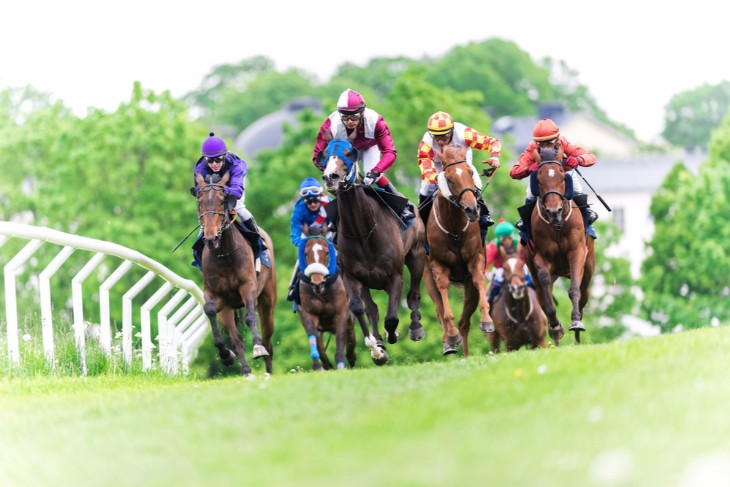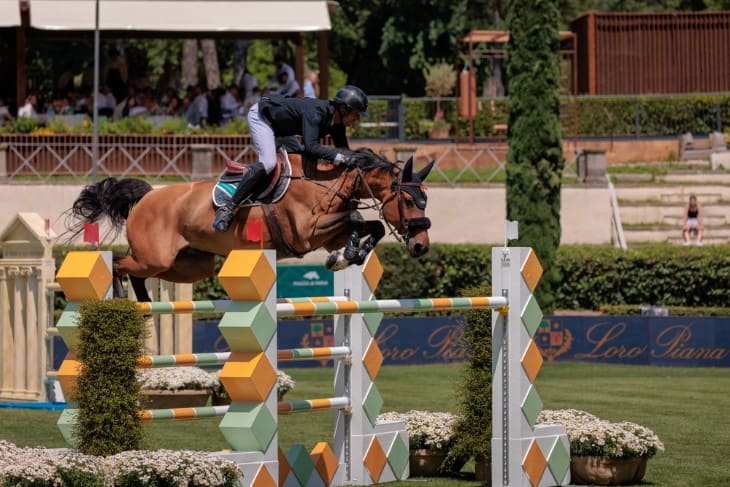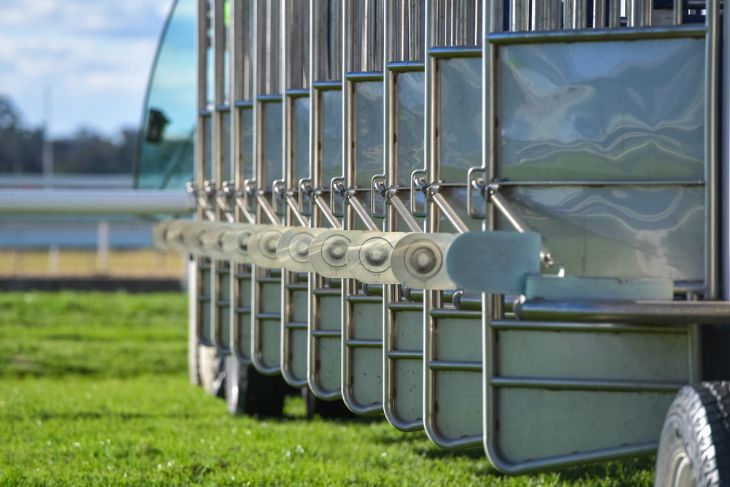- Exploring Origins: The Development of Barriers, in Racing
- The Gatekeepers of Fairness: Understanding the Purpose of Barriers
- Fortune or Folly: Dissecting the Impact of Barrier Draws
- Overcoming the Odds: Tactical Mastery and Equine Prowess
- Remembered through time: Legendary Races Influenced by Obstacles
- Preparing for Success: Methods, to Master Barriers in Horse Training
- The Jockey's Edge: Mastering the Art of Barrier Tactics
- Defying the Odds: Unforgettable Barrier-Influenced Races
- Conclusion
Horse racing has always been a sport worldwide drawing in millions of fans who are captivated by the speed, elegance and power displayed by these creatures. As the horses race down the track spectators eagerly watch, holding their breath in anticipation. However beneath the surface lies an element that can greatly impact the outcome; the nature of barriers. In this examination we delve into the challenges that influence the results of races.
Exploring Origins: The Development of Barriers, in Racing
In the stages of horse racing barriers were ropes or flags used to keep the horses organised at the starting line.. As the sport gained popularity there arose a need for an organised system for starting races. The late 18th century saw a change in Britain with the introduction of barriers and starting stalls designed to ensure fairness and enhance safety.
These modest beginnings set the stage for today's barriers. As horse racing expanded globally different regions. Experimented with barrier designs while maintaining the core objective; to establish an equal playing field and provide a standardised start, for all competitors.
- The earliest records of barrier usage date back to the Roman chariot races, where ropes were used to keep the chariots aligned at the start.
- In the 19th century, starting gates were often constructed from wood and operated manually, requiring a team of handlers to coordinate the release.
- Modern starting stalls are equipped with advanced technology, including sensors and automated gates, ensuring a fair and consistent start for every race.
As the sport progressed there was also an increase, in understanding about how crucial barriers in shaping the race's outcome. Studies, analyses and strategic evaluations focused on their impact solidifying their importance in the minds of trainers, jockeys and racing fans.
The Gatekeepers of Fairness: Understanding the Purpose of Barriers
In a paced environment where fortunes can be won or lost within moments barriers act as guardians of fairness. Their main aim is to ensure an organised start to races, reducing the chances of starts and potential mishaps that could disrupt the event. Each horse is assigned a stall at the starting line to create a playing field for all participants.
Beyond being structured barriers hold immense significance. The arbitrary assignment of barrier positions can significantly impact a horse's likelihood of winning, introducing an element of unpredictability that adds excitement and intrigue to the sport.
- A favourable barrier draw can grant a horse a strategic advantage, allowing it to conserve energy and find a clear path to the finish line.
- Conversely, an unfavourable draw may force a horse to navigate traffic congestion and cover more ground, sapping its energy and momentum.
- Trainers and jockeys meticulously analyse barrier positions, crafting race strategies that account for the unique challenges and opportunities each draw presents.
Barriers are the gatekeepers of fairness, ensuring that every horse has an equal chance at the starting line, while simultaneously injecting a dose of excitement and uncertainty that keeps spectators on the edge of their seats.

Fortune or Folly: Dissecting the Impact of Barrier Draws
In the moments just before a race begins, everyone's attention is fixed on the barrier draw, where the destinies of horses and their connections are decided. As the names are announced trainers, jockeys and bettors alike hold their breath in anticipation of an outcome. This critical moment can.. Break fortunes in an instant.
The importance of the barrier draw cannot be emphasised enough as it has the power to significantly impact a horse's chances of winning. Securing a starting position, near the rail can offer an more efficient path, around the track helping to conserve valuable energy for the final sprint. On the other hand, drawing a position may force a horse to take a longer and more challenging route potentially leading to being boxed in or pushed outwards resulting in wasted time and effort.
- Historical data and statistical analyses have repeatedly demonstrated the influence of barrier draws on race outcomes, particularly in longer-distance events.
- However, the beauty of horse racing lies in its unpredictability, and exceptional horses have defied the odds time and time again, triumphing despite unfavourable draws.
- The psychological impact of a barrier draw cannot be underestimated, as jockeys must adapt their tactics and strategies to account for their starting position.
As the barrier draw unfolds, a complex interplay of factors comes into play, shaping the race's narrative. From the distance of the race and track conditions to the specific layout and weather patterns, each element contributes to the potential impact of a barrier draw. It is a delicate dance, where fortune and folly intertwine, leaving spectators breathless in anticipation.
Overcoming the Odds: Tactical Mastery and Equine Prowess
When faced with a barrier, draw the true character of a horse and its jockey is truly put to the test. It's in these moments that skillful tactics and the strength of the horse come together navigating through obstacles that lie ahead on their path to victory.
Experienced jockeys utilise techniques to overcome barrier placements. Some choose to hold back their horse at the start steering clear of race chaos and conserving energy for a surge later on. Others try to guide their horses aiming for a favourable position nearer, to the inner rail – an intricate move that demands precise timing and coordination.
- The ability to break swiftly from the gates and secure an early lead is a prized skill, allowing horses to dictate the pace and avoid potential traffic.
- Horses with exceptional acceleration and speed can often overcome wide draws by bursting through the field before the first turn.
- Stamina and endurance are equally valuable assets, enabling horses to maintain a strong pace and steadily make up ground throughout the race.
It's not about the strategies employed by the jockeys that determine success in horse racing; the abilities of the horses themselves play a role as well. Some horses have a talent for acceleration while others show incredible determination and resilience that drives them forward against all odds.
As spectators we witness an enthralling showcase of skill, tactics and the impressive abilities of both horse and rider as they navigate the obstacles on their path to triumph. It's a spectacle that highlights the timeless enchantment of this sport, where unexpected outcomes can surprise us at any moment.
Remembered through time: Legendary Races Influenced by Obstacles
In the history of horse racing certain races stand out as enduring examples of how barriers can impact the results. These memorable moments have been etched into the memories of racing fans serving as testaments to the sports unpredictability. The resilience shown by its equine heroes.
One particular race destined for remembrance is the 2010 Melbourne Cup, where Makybe Diva, a mare made history by clenching her third consecutive victory, against all expectations.Facing the task of beginning from gate 14 in a field of 24 horses, Makybe Diva and her rider Glen Boss were, up against it. However with unwavering resolve and tactical skill they manoeuvred through the field. Surged ahead, securing Makybe Divas legendary status in the world of racing.
- The 2019 Epsom Derby witnessed a similar triumph over adversity, as the highly-favoured Anthony Van Dyck overcame a wide draw from stall 13 to claim victory.
- In the 2015 Kentucky Derby, American Pharoah emerged victorious after starting from the less-favourable position of post 18, showcasing the ability of exceptional horses to defy the odds.
- The 2003 Breeders' Cup Classic saw Funny Cide, a gelding from humble beginnings, overcome a wide barrier draw to capture the coveted title against a star-studded field.
These horse races showcase the essence of horse racing. Underscore the significant role that barriers play in shaping the storyline. They highlight how barriers despite presenting challenges cannot diminish the spirit of these creatures and their skilled handlers.
Preparing for Success: Methods, to Master Barriers in Horse Training
In the world of horse racing triumph is not a matter of luck. A result of thorough preparation and training. To ensure that horses are ready to face barrier challenges trainers use techniques to build confidence, speed and calmness.
An essential part of barrier training involves introducing horses to starting stalls. By exposing them to this environment and guiding them patiently horses become comfortable, with the confined space and the sensation of gates opening. Experienced handlers work closely with the animals building trust and providing reassurance throughout this process.
- Simulated starts are a vital component, allowing horses to practise breaking from the gates, accelerating rapidly, and finding their stride in a controlled environment.
- Horses are trained to start from various barrier positions, ensuring they are prepared for any potential draw and can adapt seamlessly to different scenarios.
- The synergy between horse and jockey is honed through countless repetitions, with the jockey perfecting their timing and cues, and the horse responding with precision.
Barrier training is a journey that requires patience, persistence, and a deep understanding of each horse's unique temperament and abilities. It is through this rigorous preparation that horses develop the skills and confidence needed to tackle the barriers head-on, setting the stage for a seamless and successful race day performance.
- Specialised equipment, such as starting gate simulators and controlled environments, are often utilised to recreate race-like conditions during training sessions.
- Video analysis allows trainers and jockeys to identify areas for improvement and fine-tune their strategies for specific barrier positions or track layouts.
- Progressive training regimens gradually increase the intensity and complexity of barrier exercises, ensuring the horse is conditioned for the demands of actual races.

The Jockey's Edge: Mastering the Art of Barrier Tactics
In the realm of horse racing jockeys play the role of conductors skillfully directing their horse companions through the dance of every race. Their expertise and choices can determine success or failure particularly when facing the obstacles presented by starting positions.
The initial moments of a race are critical, and jockeys must strike a delicate balance between aggression and composure. A well-timed move from the gates can secure a favourable position early on, granting the horse a better chance to find a clear path and conserve energy. However, excessive aggression can lead to interference, potentially resulting in penalties or disqualification.
- Jockeys must adapt their strategies based on the horse's running style and the barrier draw, tailoring their approach to maximise the chances of success.
- Quick decision-making is paramount when faced with unpredictable circumstances, such as other horses jostling for position or potential gaps opening up during the race.
- Understanding the nuances of each track, including gradients, turns, and surface conditions, is a skill honed through years of experience and familiarity.
The partnership between horse and jockey is a dynamic dance, where trust and communication are paramount. A seasoned jockey can unlock a horse's full potential, allowing them to perform at their peak and overcome potential barriers to success. It is a symbiotic relationship that transcends mere physical prowess, as the two become a unified force, navigating the invisible hurdles that litter the path to victory.
- Jockeys often engage in extensive film study and data analysis to gain insights into the tendencies and strengths of their mounts and competitors.
- Mental preparation and visualisation techniques are employed to cultivate a focused mindset, enabling jockeys to make split-second decisions under immense pressure.
- The ability to read a horse's body language and respond accordingly is a hallmark of exceptional jockeys, fostering a deeper connection and understanding between the two athletes.
Defying the Odds: Unforgettable Barrier-Influenced Races
Throughout the history of horse racing certain races have left a lasting impact on fans and enthusiasts. These memorable moments remind us of the sports nature. The resilience shown by its beloved four legged athletes when faced with tough challenges.
One race that stands out is the 2010 Melbourne Cup, where the remarkable mare Makybe Diva clinched her victory against all odds. Despite starting from barrier 14 in a field of 24 horses, Makybe Diva and her jockey Glen Boss faced a task. Yet with determination and strategic prowess they manoeuvred through the chaos and traffic to secure Makybe Divas status in the world of horse racing.
- In the 2019 Epsom Derby, the highly-favoyred Anthony Van Dyck overcame a wide draw from stall 13 to claim victory, defying the expectations of many and showcasing the ability of exceptional horses to triumph over adversity.
- The 2015 Kentucky Derby saw American Pharoah emerge victorious after starting from the less-favourable position of post 18, solidifying his status as a true champion.
- Funny Cide's triumph in the 2003 Breeders' Cup Classic, where the gelding from humble beginnings overcame a wide barrier draw to capture the coveted title against a star-studded field, remains a testament to the unpredictable nature of the sport.
These races serve as shining beacons of hope and inspiration, reminding us that while barriers may present formidable challenges, they can never truly extinguish the indomitable spirit of these magnificent animals and their skilled handlers. They are living proof that with the right combination of talent, strategy, and determination, even the most daunting obstacles can be overcome.
- The 2011 Japan Cup saw the heavily favoured Buena Vista overcome a wide barrier draw to claim victory, solidifying her place as one of the all-time greats in Japanese racing history.
- In the 2017 Breeders' Cup Mile, World Approval defied the odds by overcoming a wide draw to capture the prestigious title, etching his name in the record books.
- The 2021 Melbourne Cup saw the lightly-regarded Very Elegant overcome a difficult barrier draw to claim victory, providing a fairytale ending to her illustrious career.
Conclusion
In the captivating realm of horse racing barriers represent the challenges that separate victory from defeat. These physical structures, once ropes and flags have transformed into starting stalls bearing witness to the sports rich heritage and its commitment to fairness and excitement.








